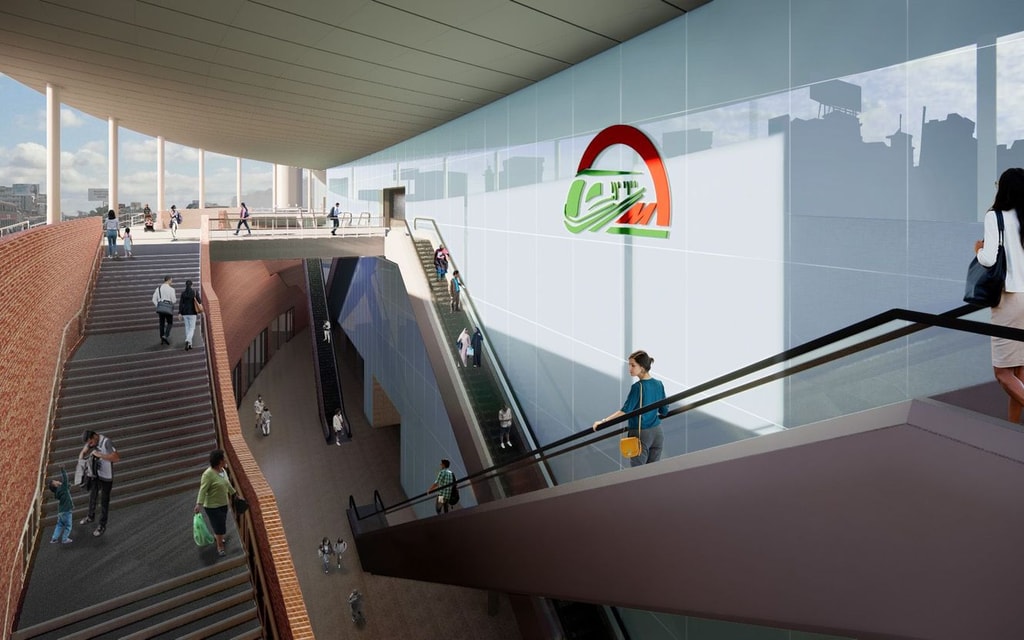Sustainable transport in Asia: environmental mass transit
Jeremy Farrington, Principal and head of our Singapore studio addresses the problems and solutions to bring forward sustainable mass transit across Asia.



It’s no hidden secret that the rapid and continued urbanisation that we see throughout Asia Pacific is creating a diversity of issues. The most pressing issue that concerns regional governments, policy makers, planners, developers and investors, is twofold. Firstly, without a holistic approach to growth that incorporates sustainable transport and infrastructure solutions, they struggle to promote economic growth and employment while ensuring protection of the environment and climate change. Secondly the challenge to develop urban infrastructure, transport and services that enhances urban living and sustainability, while preserving the values that are typical to their region is profound.

For placemakers, designers and engineers, there is a considerable amount to unpack in beginning to address the problems. But it’s important to not hide from the hard facts. With more than 60% of the world's population residing in Asia, the need for sustainable transport solutions has never been more critical. The transportation sector in Asia is a significant contributor to greenhouse gas emissions, air pollution, and traffic congestion.
Continued city development and increasing vehicle ownership has led to a surge in transport-related challenges in places like Manila, Dhaka, and Jakarta. Many cities like Beijing, Delhi and Shanghai frequently grapple with severe air quality issues, resulting in public health crises and diminished quality of life and across the region, a legacy of outdated, poor quality, inefficient transport systems and infrastructure is hindering economic growth. Therefore, transport development in Asia is complex. It necessitates the need for collaborative strategies that involve multiple stakeholders, such as national and local governments who play a critical role in fostering sustainable transport and communities who ensure that transport solutions meet local needs and ensure public buy-in.
.jpg?u=2024-11-21T11:33:01.720Z&w=1536&q=90)
The lessons being learned here are being applied across the APAC region in new metro networks currently under development. Dhaka, for example, the rapidly developing capital city of Bangladesh, is undergoing a significant transformation with the introduction of a series of metro lines and new road infrastructure.

In collaboration with Nippon Koei, a multidisciplinary BDP team has been building on both international and local and regional expertise to develop sustainable, low carbon stations and transit-oriented designs that ensure a cultural and climatic fit for a city as vast and intricate as Dhaka. Elsewhere in Asia, smart mobility and technology is transforming transport.
China, South Korea and Japan lead the way with progressive policy changes to further encourage and implement EV adoption, autonomous vehicles, smart traffic management solutions and walkable city masterplans. Whilst there is still some way to go, pilot projects in Shenzhen, Bangkok and Seoul are an iterative step in the right direction.
Indeed, our work at Ohgishima in Tokyo is another example of promoting sustainable transport models. Working with the landowner – JFE, the aim is to convert its Steel’s East Works located in Kawasaki City into new industrial sites to create fields of innovation and enterprise that will address the complex challenges involved in the pursuit of carbon neutrality, next generation urban transport and disaster response.
.jpg?u=2024-11-21T11:33:21.211Z&w=1536&q=90)
So, while there are indicators of a promising direction for sustainable transport strategies in Asia, there are still challenges to navigate and the success will hinge on a few key areas. Increased investment in sustainable transport infrastructure, such as dedicated bus lanes, pedestrian pathways, and EV charging stations is crucial for encouraging adoption. Continued innovation in clean technologies, such as hydrogen fuel cells and battery technology will be essential and comprehensive policies that promote sustainability, equity, and resilience must be established. And perhaps even more crucially, we know that educating the public about the benefits of sustainable transport can drive behavioural changes.
For cities, all future transit related campaigns should highlight the health, environmental, and economic advantages of embracing sustainable modes of transport. So, sustainable transport in Asia is not just an aspiration, it is a necessity for achieving a liveable and prosperous future. By embracing innovative practices, adopting collaboration among stakeholders, and overcoming existing challenges, Asia can chart a course toward a sustainable transportation landscape. With proactive leadership and a commitment to sustainability, the region has the potential to set a global standard in sustainable transport, paving the way for a greener and more connected future.